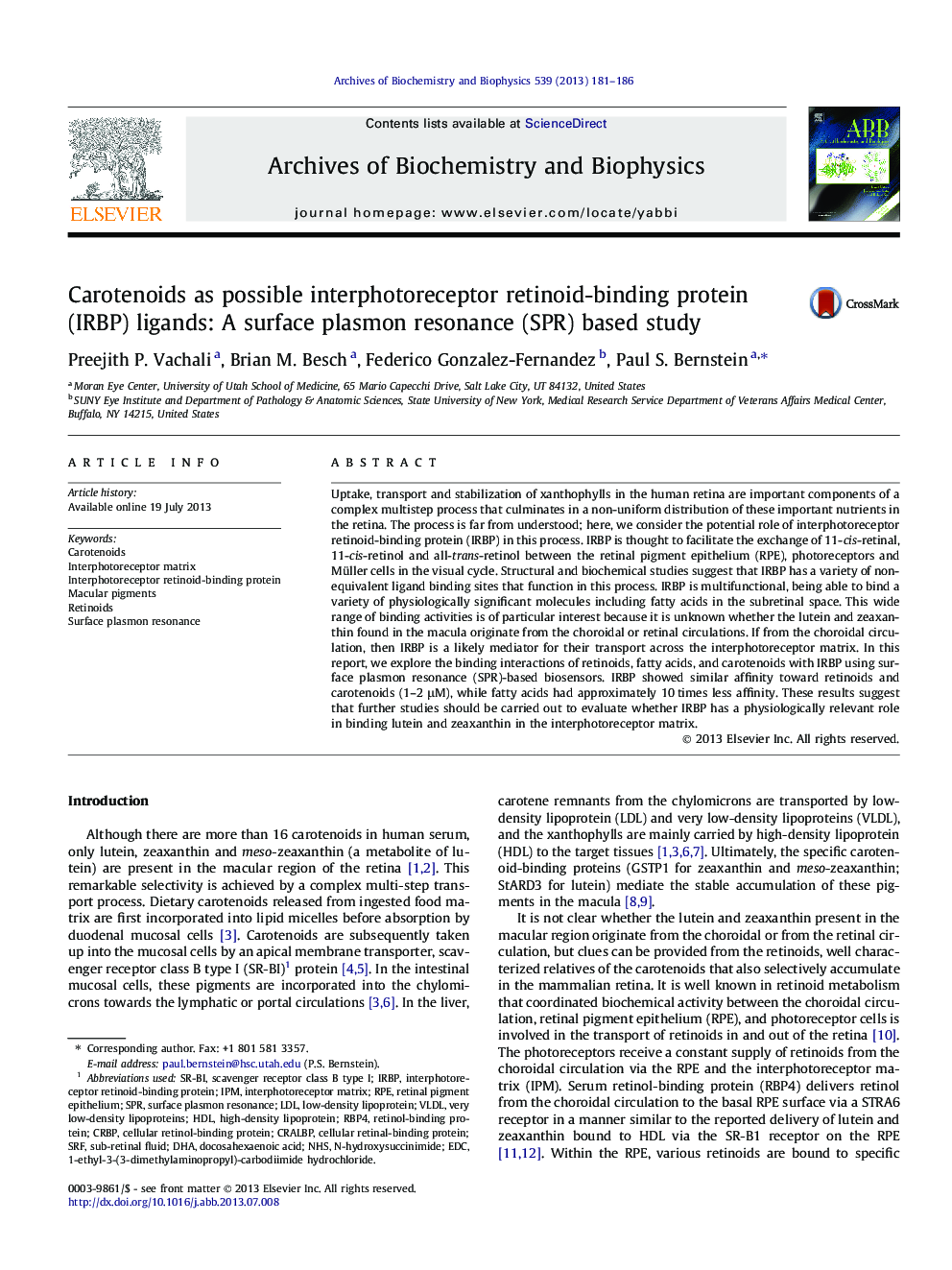| Article ID | Journal | Published Year | Pages | File Type |
|---|---|---|---|---|
| 1925311 | Archives of Biochemistry and Biophysics | 2013 | 6 Pages |
•Interphotoreceptor retinoid-binding protein (IRBP) binds a variety of ligands.•A surface plasmon resonance biosensor was employed to study these interactions.•IRBP is able to bind carotenoids and retinoids with similar affinities.•IRBP has 10 times less affinity for ocular fatty acids.•IRBP may function as a carrier of carotenoids across the interphotoreceptor matrix.
Uptake, transport and stabilization of xanthophylls in the human retina are important components of a complex multistep process that culminates in a non-uniform distribution of these important nutrients in the retina. The process is far from understood; here, we consider the potential role of interphotoreceptor retinoid-binding protein (IRBP) in this process. IRBP is thought to facilitate the exchange of 11-cis-retinal, 11-cis-retinol and all-trans-retinol between the retinal pigment epithelium (RPE), photoreceptors and Müller cells in the visual cycle. Structural and biochemical studies suggest that IRBP has a variety of nonequivalent ligand binding sites that function in this process. IRBP is multifunctional, being able to bind a variety of physiologically significant molecules including fatty acids in the subretinal space. This wide range of binding activities is of particular interest because it is unknown whether the lutein and zeaxanthin found in the macula originate from the choroidal or retinal circulations. If from the choroidal circulation, then IRBP is a likely mediator for their transport across the interphotoreceptor matrix. In this report, we explore the binding interactions of retinoids, fatty acids, and carotenoids with IRBP using surface plasmon resonance (SPR)-based biosensors. IRBP showed similar affinity toward retinoids and carotenoids (1–2 μM), while fatty acids had approximately 10 times less affinity. These results suggest that further studies should be carried out to evaluate whether IRBP has a physiologically relevant role in binding lutein and zeaxanthin in the interphotoreceptor matrix.
